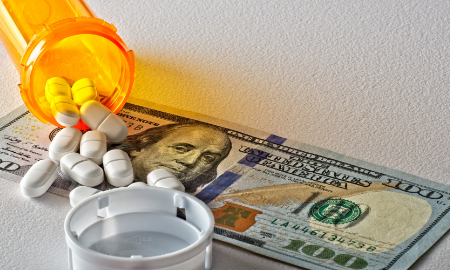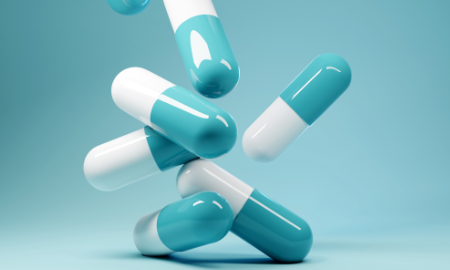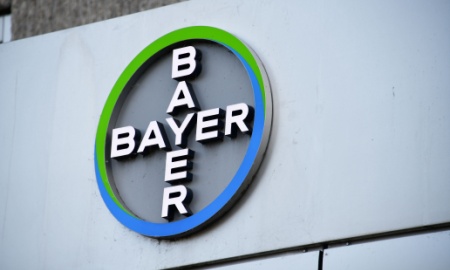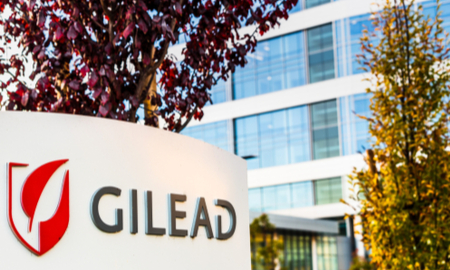Sign up for our free daily newsletter
YOUR PRIVACY - PLEASE READ CAREFULLY DATA PROTECTION STATEMENT
Below we explain how we will communicate with you. We set out how we use your data in our Privacy Policy.
Global City Media, and its associated brands will use the lawful basis of legitimate interests to use
the
contact details you have supplied to contact you regarding our publications, events, training,
reader
research, and other relevant information. We will always give you the option to opt out of our
marketing.
By clicking submit, you confirm that you understand and accept the Terms & Conditions and Privacy Policy
While much of political life in the US is polarised, lawmakers and the executive branch have coalesced to find common ground in the fight against perceived disproportionately-high drug prices in the country. A variety of approaches have been deployed in an attempt to drive lower prices. This article looks at some strategies to directly or indirectly control drug prices as well as some considerations on how to address this changing landscape from an IP perspective.
Older drugs reexamined
President Biden’s signature 2022 law – the Inflation Reduction Act – contains a key drug price provision that allows the secretary of health and human services (HHS) to negotiate prices with drug manufacturers for certain drugs covered under Medicare Part D (starting in 2026) and Part B (starting in 2028). HHS announced the first list of 10 Part D drugs selected for negotiation on 29 August 2023. All of the drug manufacturers have been negotiating with HHS, and the ‘maximum fair price’ for these 10 drugs is to be announced in September 2024.
Despite the negotiation process proceeding as proscribed, at least 14 lawsuits challenging the IRA’s price negotiation scheme have been filed, with four currently being briefed before the Third and Fifth Circuits. These lawsuits challenge the IRA on a host of different grounds, including allegations of unconstitutionality under the First and Fifth Amendments and violation of the Administrative Procedures Act. The lower courts that have issued decisions have all sided against the challengers – allowing the negotiations to proceed. Nevertheless, the IRA will only impact the pricing of a fraction of the drugs currently marketed.
Attempts to limit patent portfolios
Another theory in why drug prices are allegedly too high is that innovator companies build a thicket of patents around the drug product, making any generic challenge to the patent estate more difficult and costly. Critics of drug manufacturers claim that patent thickets are obtained by “gaming” the patent system to obtain superfluous patents. Drug manufacturers respond that each patent claims a novel and nonobvious invention and is entitled to patent protection as determined by the US Patent & Trademark Office (USPTO).
To disincentivise obtaining many patents protecting a therapeutic product, S. 3583 (“A bill to address patent thickets”) would require a patentee to select a single patent to enforce against an alleged infringer when the drug manufacturer has a ‘Patent Group’ protecting the product. While this legislation has bipartisan support, previous versions of the bill have been opposed by Democrats, who are in favour of more comprehensive legislation to address drug prices.
The USPTO also issued a proposed rule in May 2024 that would require patent applicants to agree not to enforce certain patents when a related patent is ultimately held to be invalid.
Finally, the USPTO issued a new fee structure for fiscal year 2025 to greatly increase the cost of filing continuation patents, which might disincentivise obtaining numerous patents with the same disclosure.
Proposed price controls via existing law
Some legislators have asserted that existing law can be used to achieve lower drug prices. First, some have argued that the Bayh-Dole Act ‘march-in’ rights can be used to grant licenses to generic manufacturers for drugs that were conceived or reduced to practice during the course of a project receiving government funding. The NIH has rejected at least 10 petitions asking it to exercise march-in rights because price control via march-in rights was not within the scope and intent of the NIH’s authority. Second, others have suggested that an eminent domain statute (38 U.S.C. § 1498) can be used to impose price controls via an agency authorising a generic drug company to make and sell a patented drug. In contrast to the Bayh-Dole Act, this theory could impact all marketed drugs in the US. However, apart from the IRA, no existing law has directly lowered drug pricing.
Supply chain and pharmacy benefit managers
Unlike some goods, what a consumer pays for any given medication is not solely dictated by the manufacturers. In addition to legislation directly related to drug manufacturer pricing and patenting, various legislative proposals are directed to the regulation of pharmacy benefit managers (PBMs). For example, the (i) Lower Costs, More Transparency Act (H.R. 5378 (passed 11 December 2023)); (ii) Pharmacy Benefit Manager Reform Act (S. 1339); (iii) Modernizing and Ensuring PBM Accountability Act (S. 2973); (iv) Pharmacy Benefit Manager Transparency Act (S. 127); (v) Delinking Revenue from Unfair Gouging (DRUG) Act (H.R. 6283); and (vi) Protecting Patients Against PBM Abuses Act (H.R. 2880) are all pending. The FTC also released a July 2024 report critical of PBMs and their impact on drug pricing.
Strategic considerations
The fallout of the IRA is yet to be determined. Drug manufacturers will evaluate the impact in September 2024 when the maximum fair prices are announced. However, current legislation and regulatory proposals make clear that drug patent portfolio management strategies must be reevaluated. Furthermore, recent court decisions have changed the landscape of how existing patent rights are viewed. Amgen Inc. v. Sanofi (143 S. Ct. 1243 (2023)) weakened the strength of genus claims protecting a class of therapeutics. In re Cellect (81 F.4th 1216 (Fed. Cir. 2023)) changed certain patent term expectations. At bottom, these factors encourage patent applicants to claim narrow inventions in the original application and limit subsequent patent filings to inventions that are patentably distinct from the invention claimed in the original patent. Patent applicants should consult with an experienced patent practitioner to determine the appropriate prosecution strategy before filing the first patent application disclosing a potential therapeutic product.
Conclusion
All available evidence demonstrates that the strength of innovation in the US healthcare sector is built on the strength of US patent rights and enforcement expectations associated therewith. In 2018, private investment in the biopharmaceutical section was about $129bn, which dwarfs the level of government funding ($43bn). Any legislative or regulatory changes impacting historical expectations should be wary of driving private investment away from life-saving medicines and stifling historic medical innovation in the US.
Thomas Campbell is a patent and trademark prosecution and IP litigation partner at Neal Gerber Eisenberg.
Email your news and story ideas to: [email protected]







.jpg)


